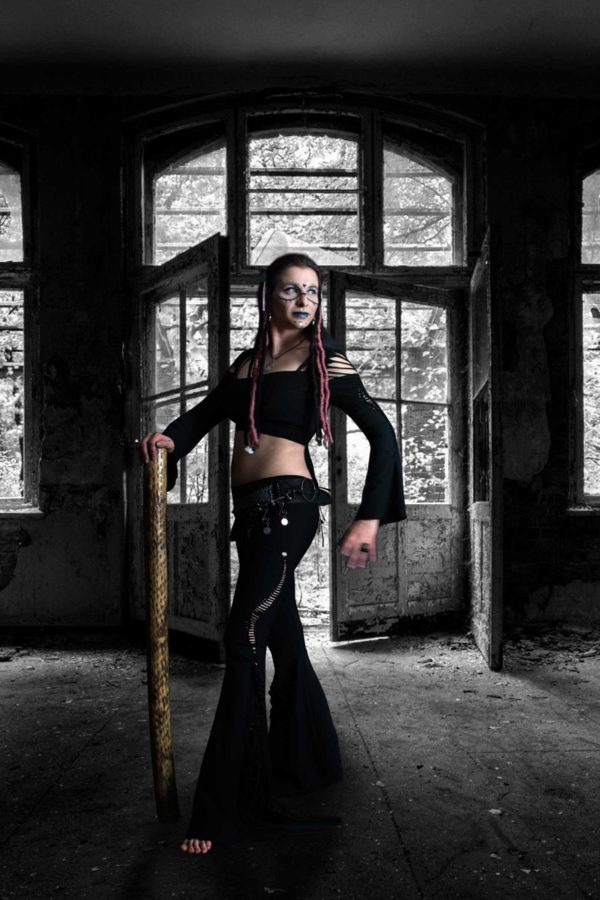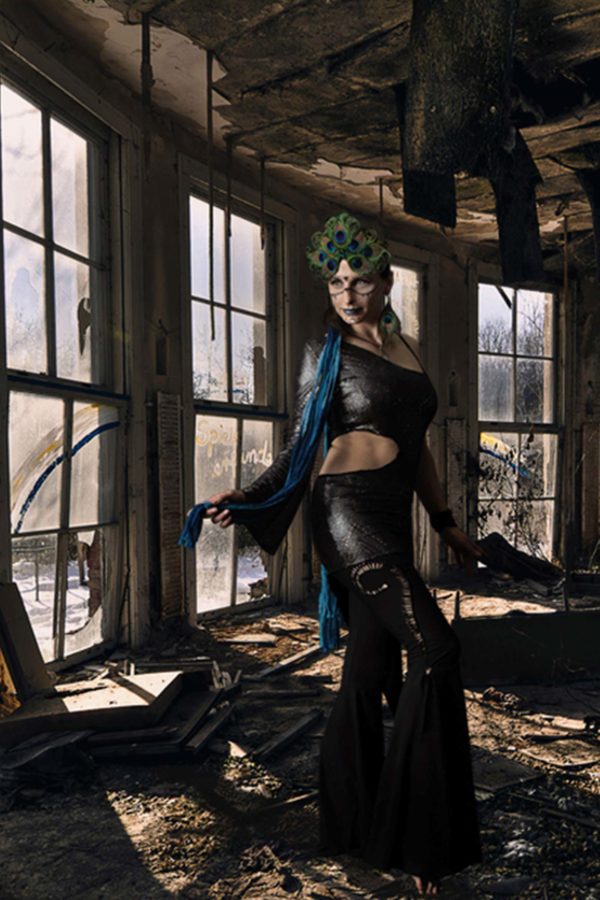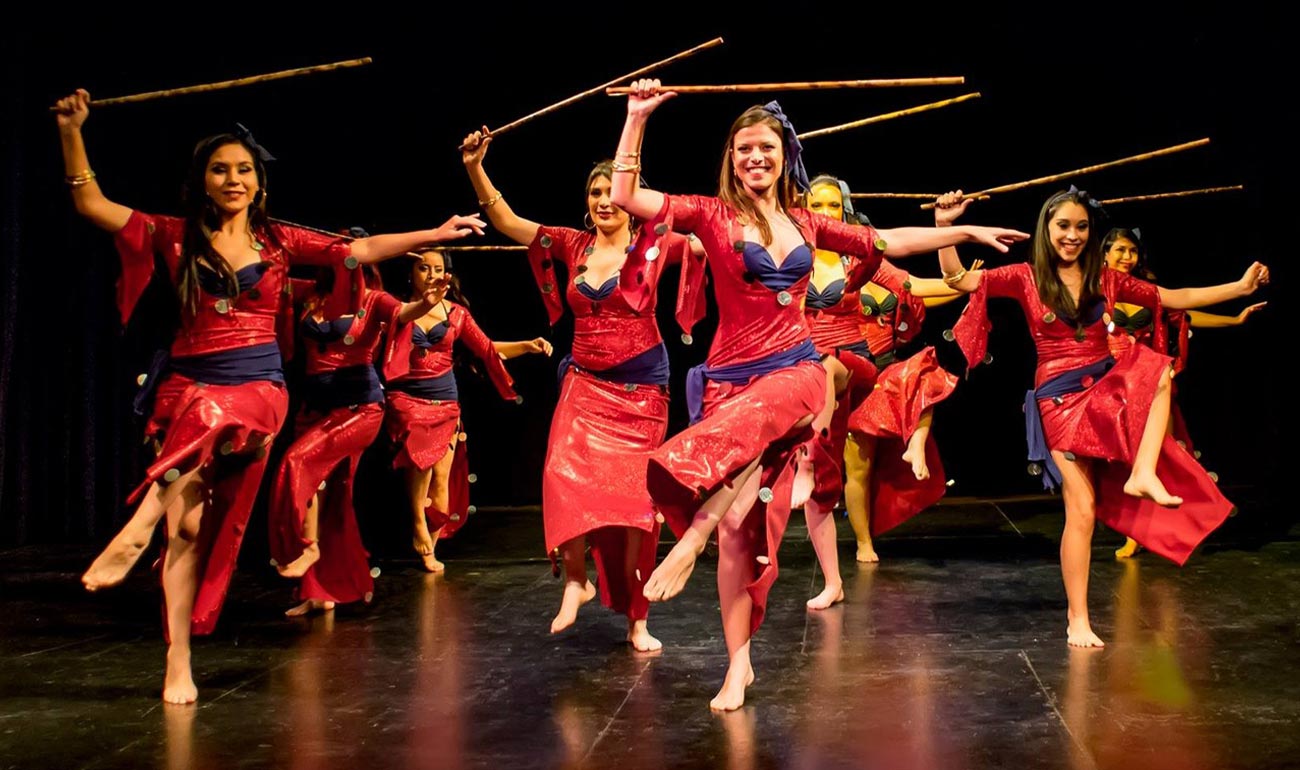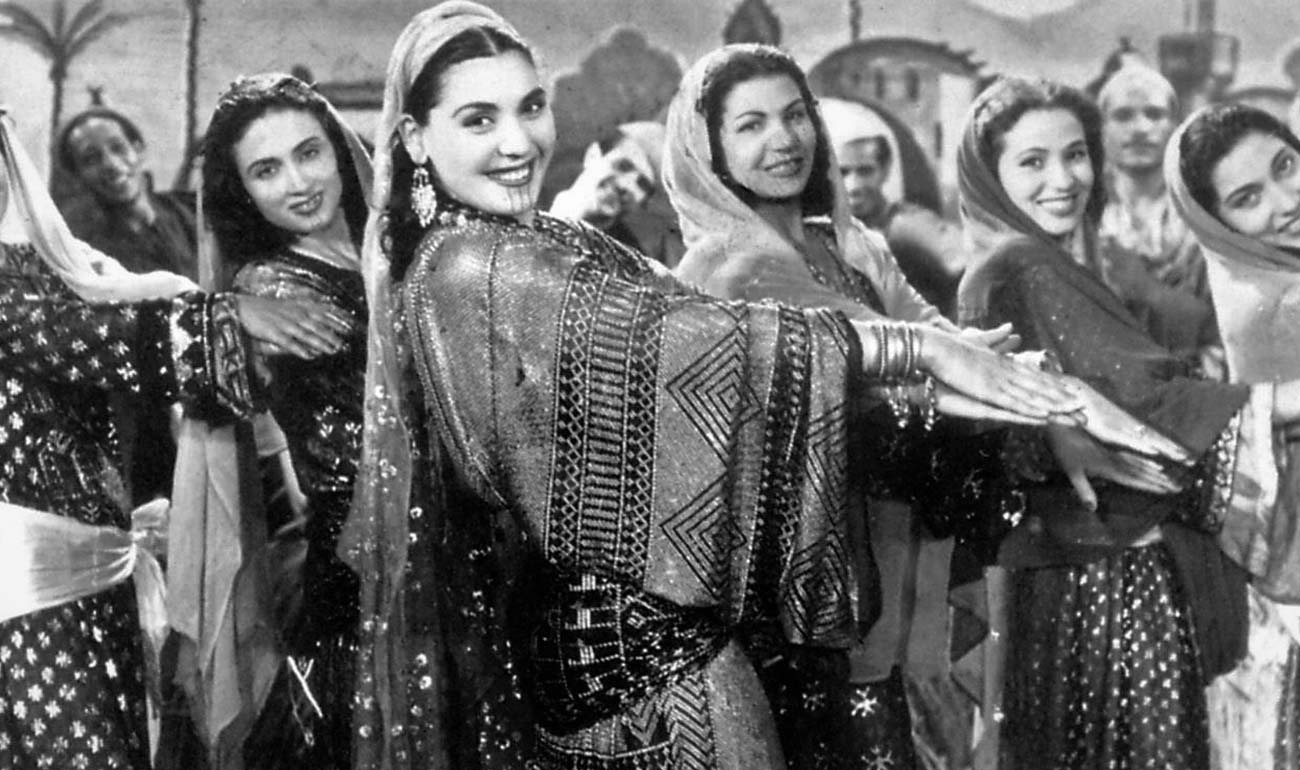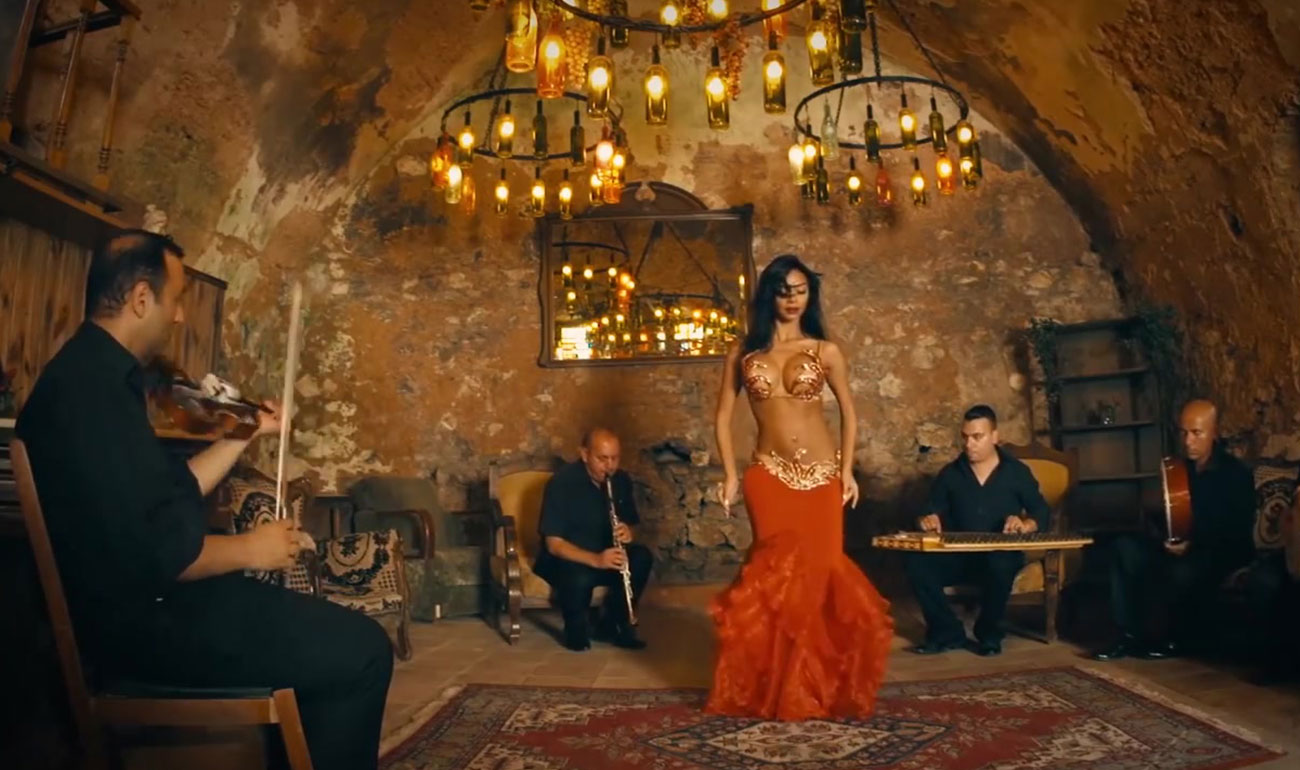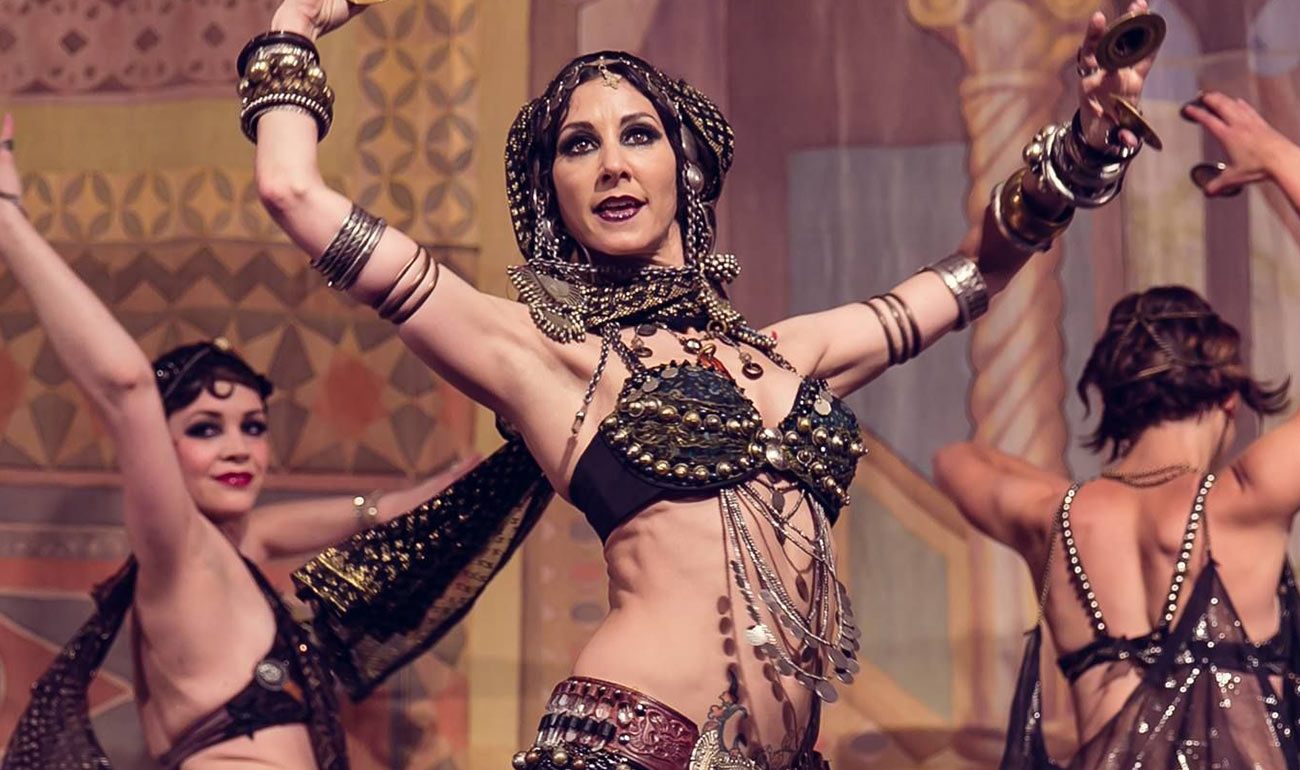
ATS and Tribal Fusion
The term Tribal derives from “tribe” (group in English) and fully expresses the philosophy of this dance made of aggregation, complicity, feeling, trust and communication through body movements. While the term “Fusion” refers instead to the fusion of the various styles from which this dance draws.
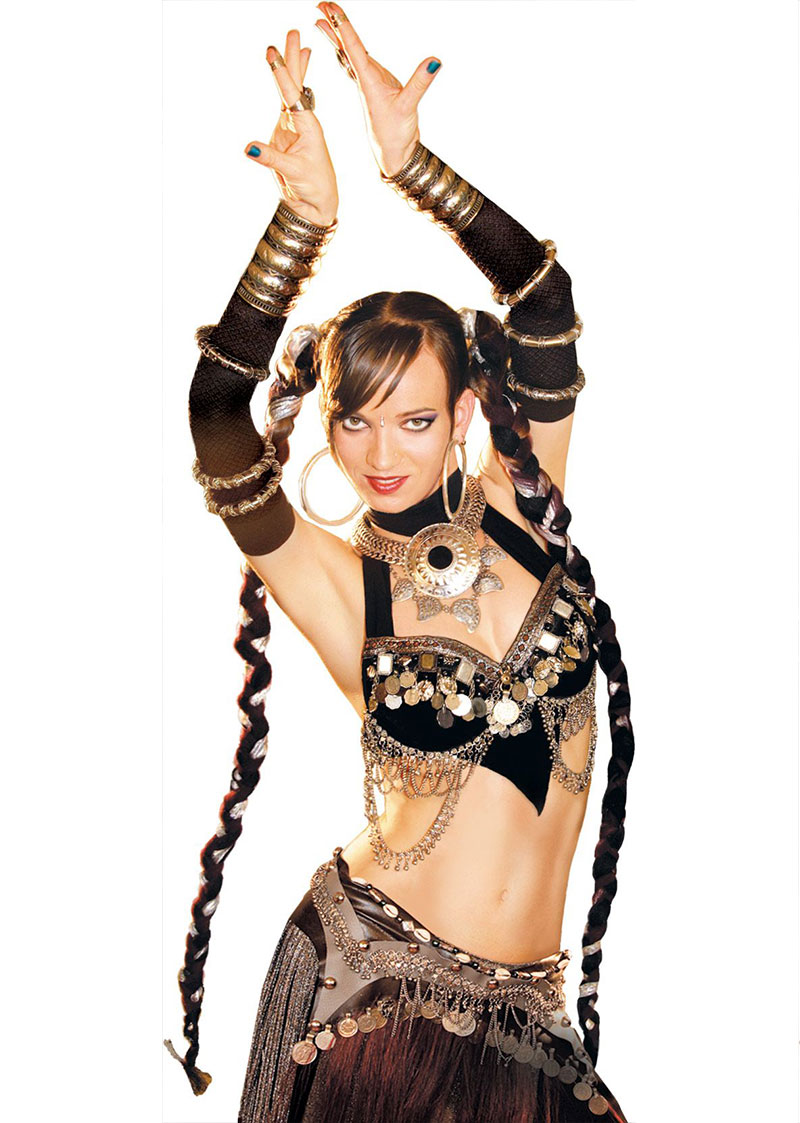
Sera Solstice
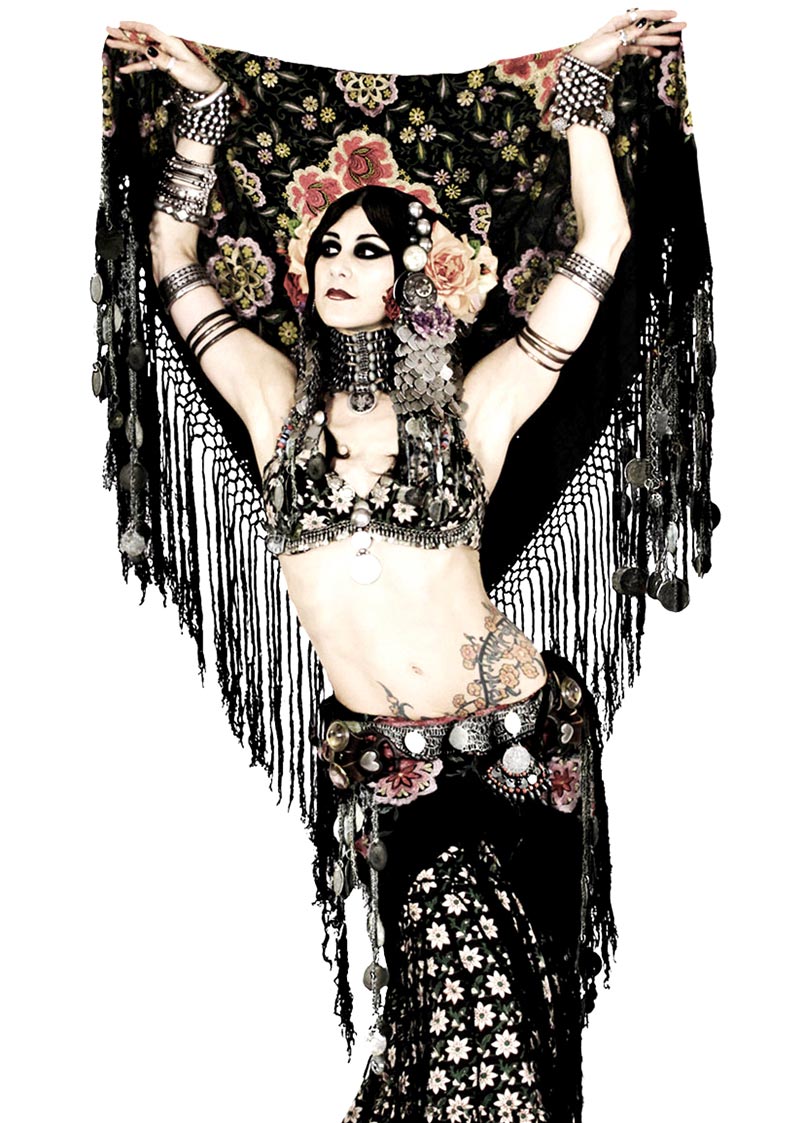
Rachel Brice
THE AMERICAN TRIBAL STYLE
For many it is considered the evolution of the American Tribal Style (ATS), born in San Francisco, California, and developed by Jamila Salimpour, Masha Archer and Caroleena Nericcio. Jamila was given the general category of “Tribal Style”. In the 1960s, Jamila, director of the Bal-Anat dance company, was inspired by the ethnic dances and costumes of the communities of the Middle East, North Africa and the Mediterranean area, and created her own version of belly dance. Taking what he observed of dancers from Morocco, Algeria, Turkey, Egypt, Syria and Lebanon dancing in the United States of America, he began to catalog the movements of oriental dance. Jamila created a basic vocabulary which continues to be the repertoire base of the tribal style. She is also responsible for merging these traditional dances with the Cabaret style.
Masha Archer, a pupil of Jamila, made an important contribution to this style. His idea of unity between dancers converts the group into a protagonist. Another contribution was to include in the dressing room of the turbans, tattoos, style of jewels and accessories that from that moment became characteristic of this style. Masha created her own dance company “San Francisco Dance Troupe”, from which she retired years later, to devote herself to the design of clothes and jewelry in San Francisco, and New York.
Masha, was the teacher of Carolena Nericcio, to whom the definitive creation of tribal dance is often attributed by bringing together steps and posture of classical oriental dance, the popular styles of North Africa, and elements of flamenco and Indian dance. In 1987, she created the company “Fat Chance Bellydance”, where he merged and adapted the influences of Jamila and Masha, in a group dance idea focused on a structure of tribal style, and introducing the format of improvisation by means of codes of call between the dancers. It is precisely at this moment that it begins to be called American Tribal Style or “American Tribal Style Belly Dance”.
Carolena contrasts her dance with the modern degenerations of the cabaret belly dance that give an image of the woman and the female body as a sexual object, and maintain that “tribal dance is not and does not pretend to be sexy”: hence the name “Fat chance “which comes from the saying” Fat chance you can have a private show”, which sounds like “you have no chance of having a private show”. Caroleena eliminates the sexual component of a dance of great sensuality such as that of the belly, introducing a mysterious and more static expression of the face, drawing the public’s attention to the strength, virtuosity and cooperation between the various members of the group.
Shop some item inspired by Artemisia
THE DANCE
In the ATS, dance is an instrument of woman’s expression for other women: there is a constant interaction between soloist and group, or rather, there is no solo dancer but each member of the group becomes, in turn, leader and guides the companions with her improvisation. Thus different possible formations are born in which the dancers can place themselves on the scene: in a triangle, in a quadrilateral or in a circle, and a real code develops which, through predetermined signals, allows the whole group to predict which one will be next movement that the leader will perform in her sequence made up of specific movements in which improvisation and repertoire are rather limited.
The movements of the ATS come from:
- the oriental dance for hips, torso and shoulders,
- North African folklore dances for hips
- flamenco and classical Indian dance for the arms and hands
- Indian dance for some foot positions
- oriental dance for the use of cymbals (almost always used)
THE COSTUMES
The costumes mix heterogeneous elements of different cultures, and fully express the exoticism and suggestive rhythms that are danced. Printed fabrics with ethnic patterns and mainly dark colors are used, belts elaborated with heavy decorations, bras without shiny effects, cholis (very tight bodice with the back uncovered), bombachos, voluminous skirts, and ethnic jewelry in opaque silver. The make up is dramatic, and claims to enhance the feeling of mystery and ethnic origin without specifying. Feet and hands are often decorated with henna tattoos.
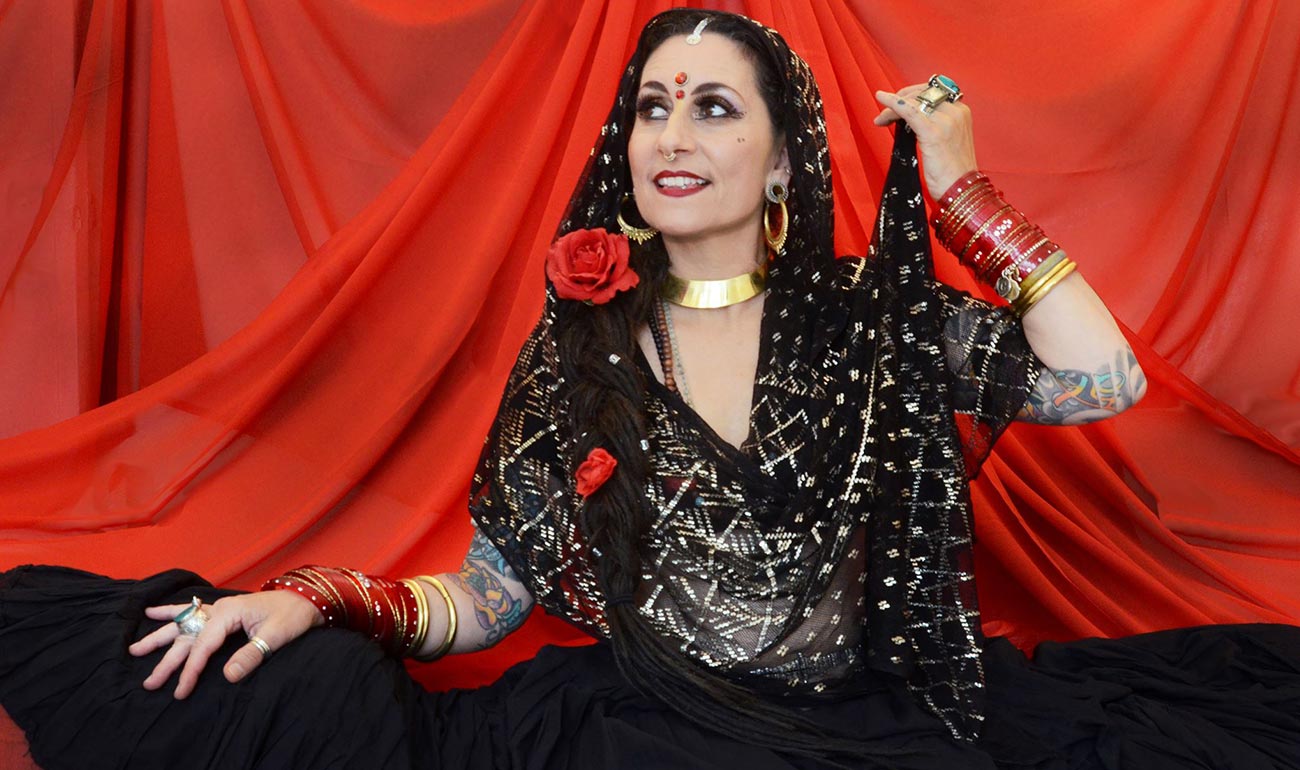
and does not pretend
to be sexy``
THE TRIBAL FUSION
When we talk about Tribal fusion it is impossible not to name Rachel Brice, who in the early 2000s brings a breath of freshness and a further evolution of this dance. Rachel studies ATS with Caroleena Nericcio, but also Hawaiian dance, flamenco, modern dance, and the Indian dances Kathak and Odissi. In 2001 she was discovered by the rock tycoon Miles Copeland and from 2002 she began to perform and play on tour nationally and internationally. It is part of Jill Parker’s “Ultra Gypsy”, and dances with Mardi Love, one of his major aesthetic influences. For five years he is on tour with his company, the Bellydance Superstars, and participates in various television and radio broadcasts, arousing a global interest in this new style. He also publishes instructional videos on Yoga in 2012 launches his online dance studio called “Datura Online”. When not teaching around the world, he lives in Portland, Oregon, where he opened the Datura studio and started a production company, Little Scarab with his partner, Sol Crawford. Together they created a training program called “8 Elements Approach to Belly Dance”.
Another artist that I personally like very much and that I was lucky enough to meet live in two seminars a few years ago in Italy, is Sera Solstice. Dancer, choreographer, electronic music producer, founder and director of the Solstice Tribe dance company and the East Coast Tribal Community of New York. She has produced and directed dozens of events in New York, both in theaters and clubs, and held seminars performing in Europe, United Kingdom, South America and the United States, participating mainly in Tribal Fusion festivals, as well as Gothic-style events. She is a former key member of three internationally renowned groups: Bellyqueen, Raqs Sahara and The Silk Road Dance Company. Her style also combines elements of jazz and hip-hop, and has been called “sublime, disturbing, psychedelic, technically superb and avant-garde”. Sera has a passion for electronic music, but she also finds balance in earthy acoustic elements: she took part in musical events with Beats Antique, which I will discuss in detail in another article.
Experimentation and research are the hallmarks of this incredibly versatile and customizable dance, always open to new musical impulses that can expand the expressive qualities of the dancer. This dance is an expression of the metaphorical and magical body, which feeds on the symbolism of the female. An art of a sensual nature not separated from the experience of the sacred. An artistic form that enhances the woman, the body and instinct.

